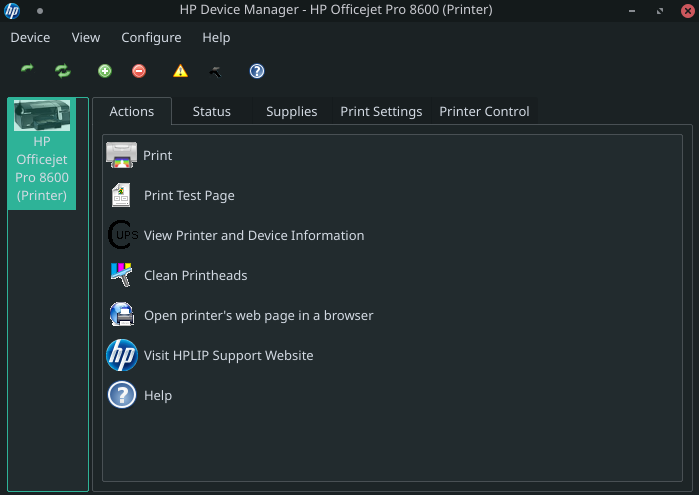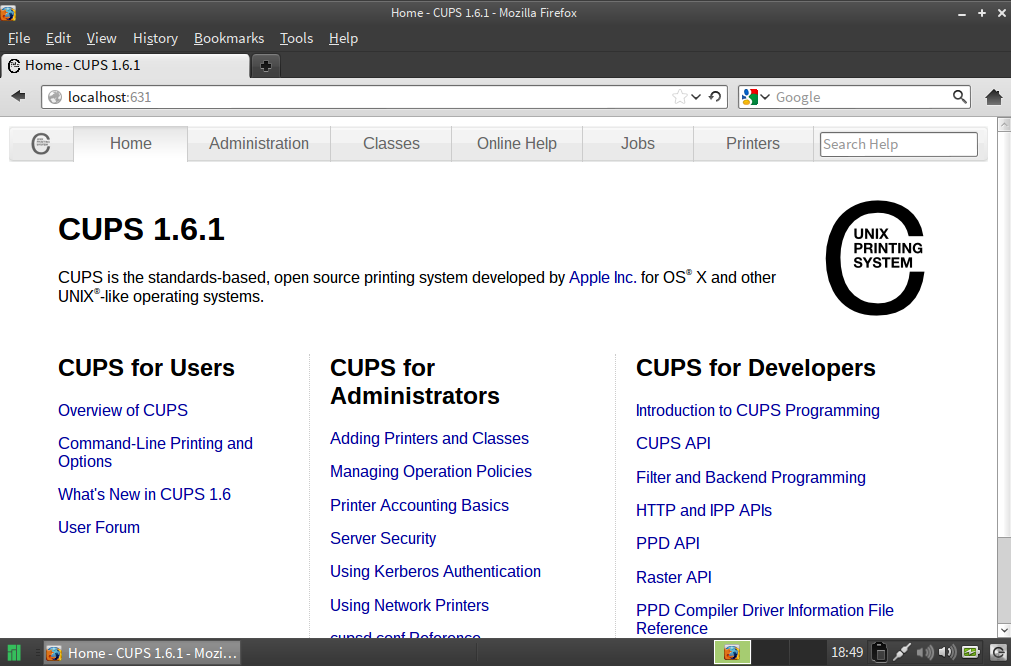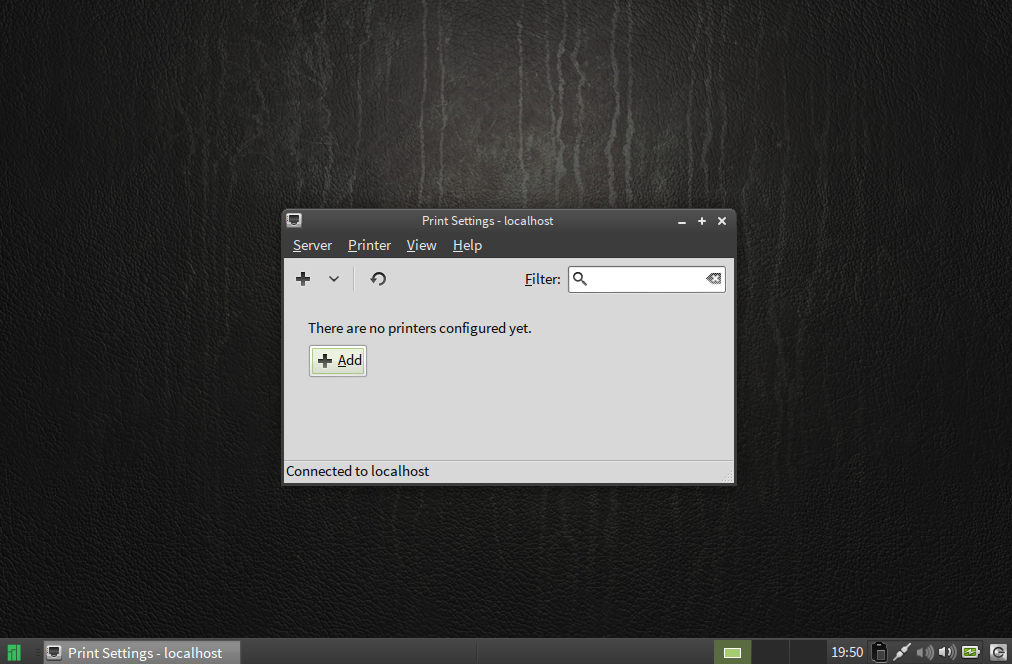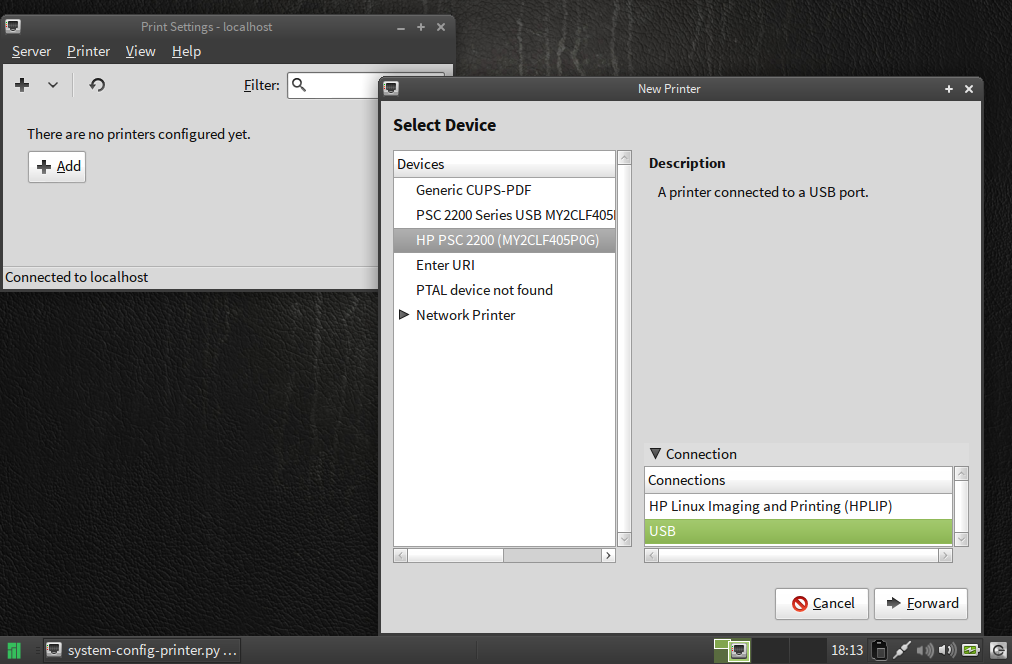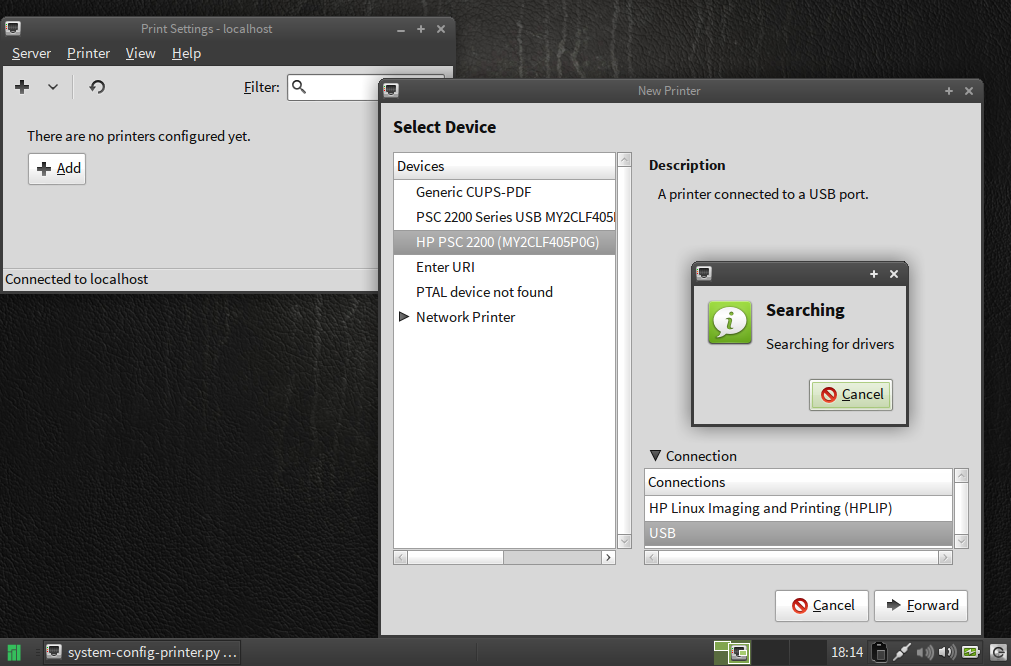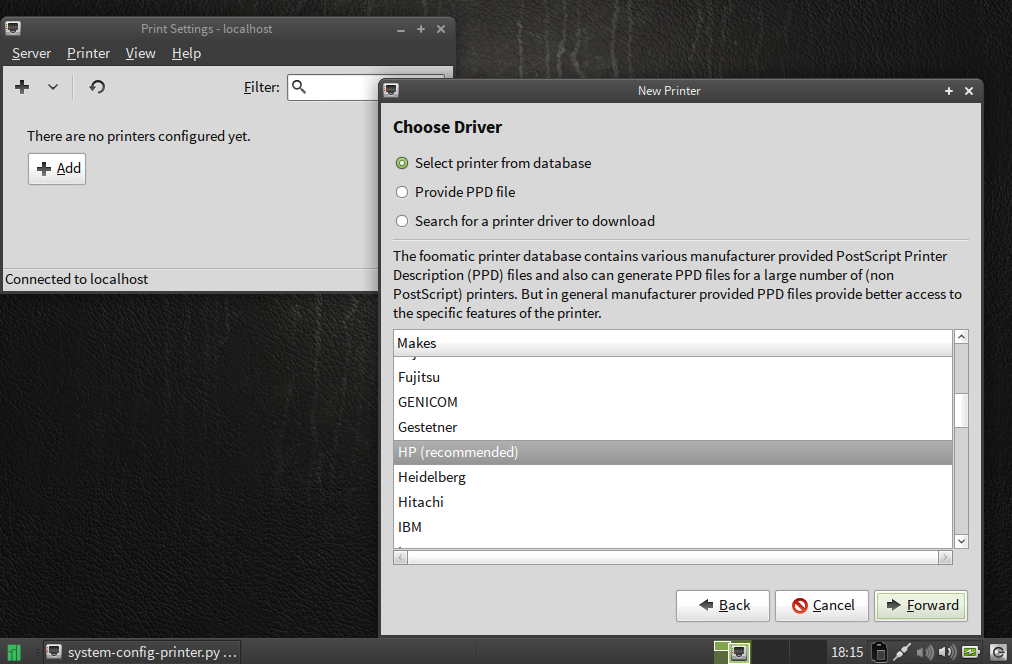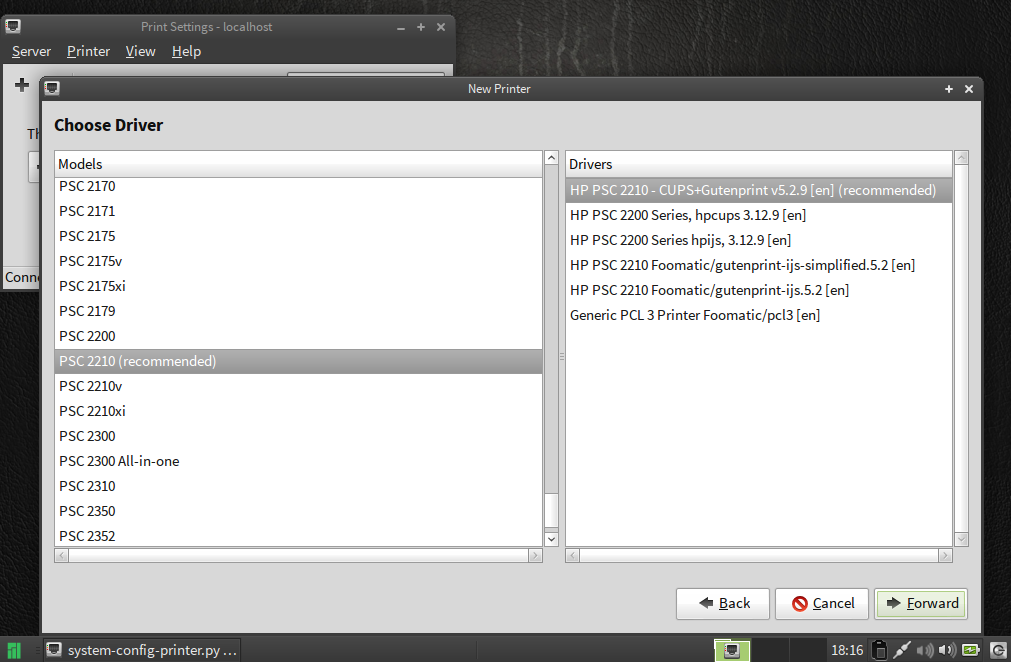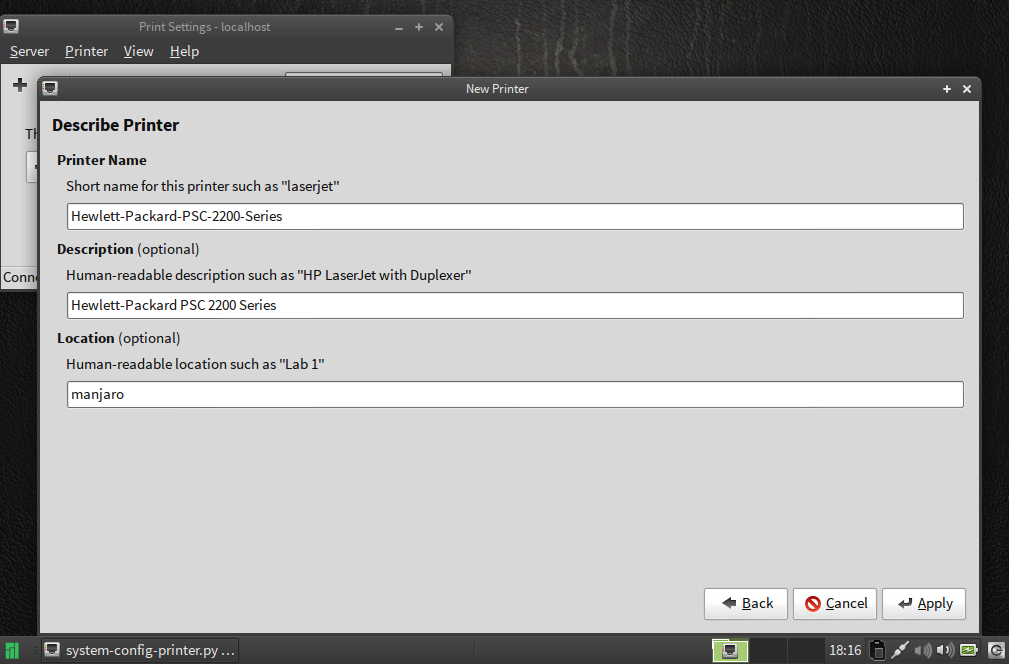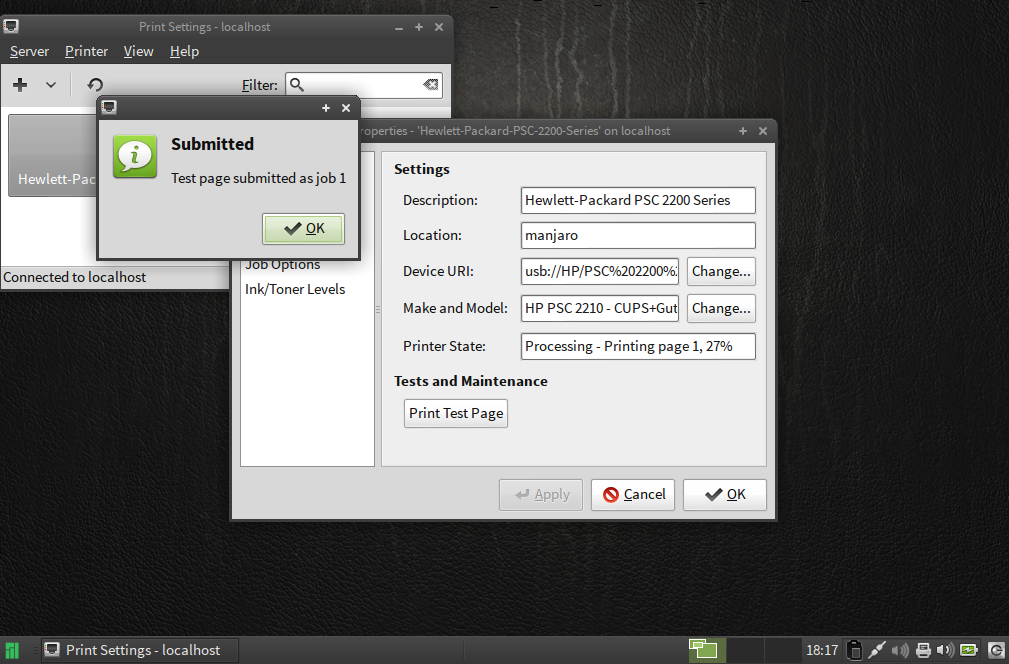Печать
Views
Actions
Namespaces
Variants
Tools
Обзор
Печать осуществляется с помощью CUPS (ранее это было сокращение от Common Unix Printing System). Это популярная система печати с открытым исходным кодом, используемая в большинстве дистрибутивов Linux благодаря простоте использования.
Установка программного обеспечения принтера
Сначала установите пакет manjaro-printer с помощью вашего любимого менеджера пакетов или с помощью команды:
Обратите внимание, что Вам может понадобиться добавить себя в группу sys. Для этого используйте команду:
Включение возможностей печати
После установки необходимого программного обеспечения для запуска и включения возможности печати введите следующие команды:
Если необходимо простое обнаружение сетевых принтеров (не во всех редакциях установлен и работает avahi), можно установить и запустить следующую службу:
На этом этапе вы должны быть готовы к настройке принтера
Управление принтерами
Управление принтерами с помощью HP Device Manager
Если у вас есть принтер производства HP - проще всего управлять им с помощью диспетчера устройств HP (hp-toolbox). Он основан на мастере подключения и обеспечивает автоматическое обнаружение и настройку принтера локально или по сети.
Его можно запустить, выбрав HP Device Manager в меню или командой hp-toolbox.
Управление принтерами через CUPS
Другой способ добавить принтер - использовать CUPS напрямую. Если CUPS был включен (и запущен) - при подключении принтера он должен быть автоматически обнаружен и настроен для использования. Сам процесс займет всего около минуты. Однако если автоматическое обнаружение и настройка не сработали - принтер можно легко настроить вручную. Это можно сделать двумя способами:
- Интерфейс веб-страницы: CUPS предоставляет интерфейс веб-страницы, открываемый в веб-браузере по умолчанию для настройки принтера. Этот интерфейс также предоставляет доступ к дополнительной информации о CUPS, а также онлайн-справку.
- Интерфейс рабочего стола: также доступен стандартный мастер рабочего стола, который должен быть сразу же знаком тем, кто уже настраивал принтер, будь то Linux или другая операционная система, например, windows. Обратите внимание, что Вам может потребоваться установить пакет конфигурации принтера вашего DE с помощью Вашего любимого менеджера пакетов или с помощью одной из следующих команд.
GNOME:
KDE:
Интерфейс веб-страницы CUPS
Для доступа к веб-интерфейсу выберите Управление печатью в меню рабочего стола. Интерфейс автоматически откроется в веб-браузере по умолчанию. Кроме того, Вы можете открыть выбранный вами веб-браузер и ввести в адресную строку следующее:
http://localhost:631/
CUPS Desktop Interface Part 1: The Automatic Method
1. Add your printer. Ensuring that your printer is properly connected and switched on, select Print Settings from your desktop menu. Once the Print Settings window has opened, click + add to add a new printer.
2. Select your printer name. Once the New Printer window has opened, under the Select Device heading, find the name of your printer and click to highlight it. If your printer is listed more than once, check the description on the right to ensure your selection is not for another function, such as scanning or faxing.
3. Select your printer connection. Under the Connection heading, click to highlight your printer's connection method. As illustrated, this will usually always be 'USB'.
4. Install your printer driver. Once your printer name and connection have been highlighted, click the Forward button and CUPS will automatically search for the available drivers for it. In most instances, once the appropriate driver has been found it will be automatically installed, and the set-up process will have completed.
Otherwise, if the process did not succeed, it will be necessary to click the forward button again in order chose the appropriate driver yourself.
CUPS Desktop Interface Part 2: The Manual Method
1. Select your printer make. If the Automatic method did not automatically find and install an appropriate driver for your printer, then clicking the forward button again will present the Chose Driver window. The first step is to select the make of your printer. As illustrated, as an HP printer is to be installed, the recommended choice of HP has been highlighted by clicking on it.
Once your make of printer has been highlighted, click the forward button to proceed to the next step.
2. Select your printer model. Under the left-heading models, select the specific model of your printer. As illustrated, as the printer model to be installed in this instance is a Model 2210, the recommended choice of PSC 2210 has been highlighted by clicking on it.
3. Select your printer driver. At last! Under the right-heading Drivers, select the appropriate driver for your printer. As illustrated, the recommended printer driver has been clicked to highlight it. It is advised that you also select whatever driver is recommended for you.
Once your printer model and driver have been highlighted, click the forward button to proceed to the next step.
4. Choose your printer name, description (optional), and location (optional). Unless you want to change something, it will not be necessary to make any amendments here.
If you are happy with the information provided - or have made the desired changes - click the Apply button to complete the process.
5. Configure your printer. Having clicked the Apply button in the previous step, your printer's properties will be displayed. By selecting the categories on the right-hand side, you can view information and amend your printer's settings if you wish. The standard settings will be fine for most people, so unless you have something specific in mind, there will be nothing you need to do.
6. Test your printer. Although optional, this step is highly recommended! Click the Print Test Page button to ensure that your printer is set up and working properly.
That's it! Now click the OK button to close the window and start using your printer.
Modifying an Installed Printer
To configure an installed printer at any time:
1. select the Print Settings option from your desktop menu, and
2. double-click the printer's icon.
The configuration window will appear. Select any of the categories on the left-hand side of the window to view the appropriate information and make any desired changes. Once complete, click the Apply and then OK buttons to confirm and save your changes, or click the Cancel button to close the window without making any changes.
Removing an Installed Printer
If for any reason you wish to remove a printer (e.g. to reinstall it), select the Print Settings option from your menu, right-click your printer's icon, and then select delete. You will need to confirm your decision to delete the printer, as well as enter your password to complete the task.
Disabling Printing Capabilities
If for any reason you wish to disable CUPS (e.g. in order to use an alternative printing system), open your terminal and enter the following command:
Конкретные принтеры/сканеры, которые, как известно, работают
| Brand | Type | Scan | Description how to set up | Issues & Solutions | More info | ||
|---|---|---|---|---|---|---|---|
| Canon | mp 280 | Yes, via network | Yes, only local | CUPS and manjaro-printer | Remote scanning | ||
| Canon | Pixma MX535 | Yes, via network | Yes, via network | Manjaro printer detects remote printer as mx530. scanner needs scangearmp2-sane-git to function properly | Needs avahi and in my case ipv6 for some reason to be able to 'see' the printer (@hanzel on the forum) | ||
| Canon | PIXMA TR4522 | Needs: cnijfilter2 or cnijfilter2-bin from the AUR | forum post | ||||
| Canon | PIXMA TS5120 | Yes | Yes | Scanner seems to work after CUPS and manjaro-printer, printing requires cnijfilter and selecting Canon TS5100 series drivers | Needs: cnijfilter2 or cnijfilter2-bin from the AUR | ||
| Epson | WF-3825 driver | Needs: epson-inkjet-printer-escpr2 AUR | Forum post | ||||
| Canon | Pixma Pro-100 | Yes, via network and local | Not a feature | manjaro-printer | Takes a moment to start printing, just be patient | ||
| Canon | ISensys | LBP223dw | Yes | forum post | |||
| Canon | Pixma E4270 | Yes via Network | not tested | Needs: cnijfilter2 or cnijfilter2-bin from the AUR | forum post | ||
| Canon | Pixma G2100 | Yes | Yes | Plug& play | forum post | ||
| Epson | ET-M1120 | Yes, via Network | Not a feature | manjaro-printer and system-config-printer | Needs: epson-inkjet-printer-escpr and epson-inkjet-printer-escpr2 in AUR and then patch from pacman | External link |
Table made from suggestion here
